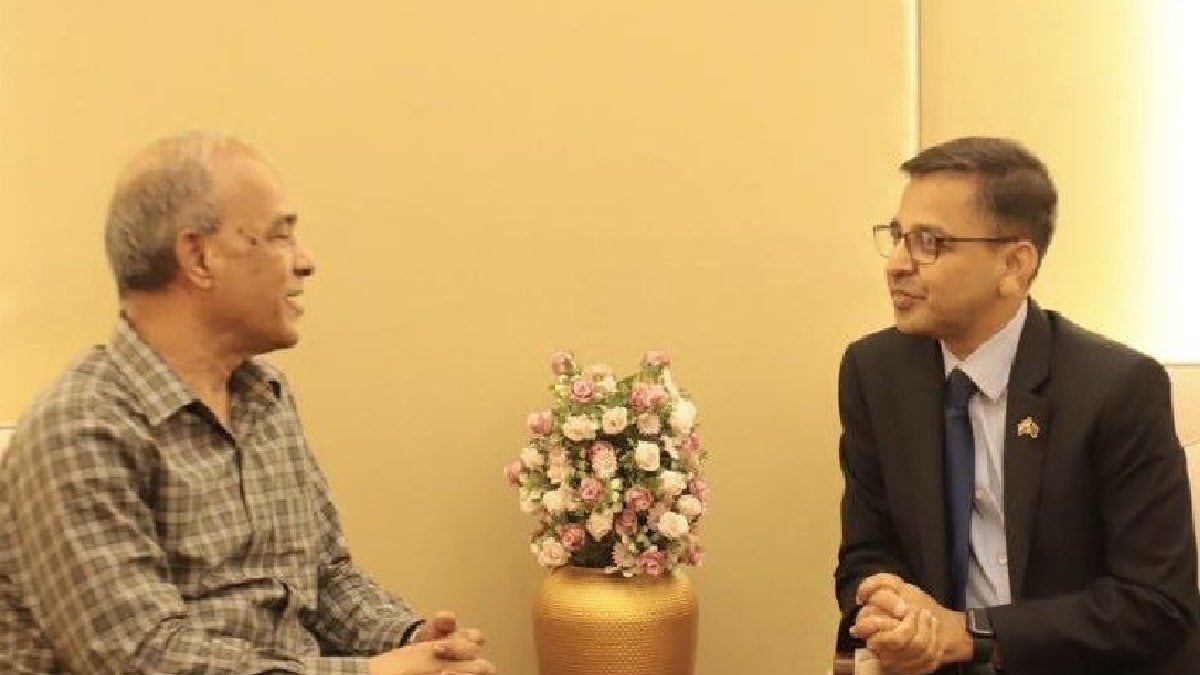Bangladesh’s interim government has expressed a desire to strengthen people-to-people ties with India, while acknowledging that this aspect has been lacking during the previous Sheikh Hasina regime. This statement by Bangladesh’s Foreign Affairs Adviser Touhid Hossain highlights a key area of focus for the interim government and a potential avenue for improving bilateral relations.
Addressing Public Dissatisfaction and Strengthening People-to-People Ties
Hossain believes that strengthening people-to-people ties is crucial for easing public dissatisfaction towards India. He emphasizes that despite strong government-level relations, this has not translated into a genuine sense of friendship and understanding among the general population.
Reasons for Dissatisfaction:
- Media Narratives: Hossain criticizes the Indian media for creating exaggerated narratives, particularly in the aftermath of the student-led protests in Bangladesh. These narratives can contribute to a negative perception of India and exacerbate tensions between the two countries.
- Lack of Engagement: The interim government believes there has been a lack of meaningful interaction and engagement between the people of Bangladesh and India. This lack of contact can foster misconceptions and misunderstandings, inhibiting the development of strong people-to-people ties.
- Economic Issues: The economic impact of India’s policies and trade practices on Bangladesh could also be a contributing factor to public dissatisfaction. For example, some Bangladeshis may feel that they are disadvantaged by trade agreements or investment decisions made by India.
Strategies to Improve People-to-People Ties:
- Cultural Exchanges: Promoting cultural exchanges through music, art, and literature can help build bridges between the two countries and foster mutual understanding.
- Education Collaborations: Enhancing educational partnerships and exchange programs can expose students to different perspectives and cultures, creating a foundation for future engagement.
- Media Engagement: Fostering greater cooperation between the media in both countries can contribute to a more balanced and informed understanding of each other’s societies and policies.
- People-to-People Diplomacy: Encouraging citizen-led initiatives, such as volunteer programs and community projects, can facilitate personal interactions and strengthen bonds across borders.
Exploring Regional Cooperation: BIMSTEC and SAARC
While expressing the desire for strong ties with India, Bangladesh also looks at regional cooperation frameworks. Hossain emphasizes the potential of BIMSTEC (Bay of Bengal Initiative for Multi-Sectoral Technical and Economic Cooperation) as an alternative to SAARC (South Asian Association for Regional Cooperation).
BIMSTEC’s Role and Challenges:
- Alternative to SAARC: BIMSTEC’s emergence as a platform for regional cooperation arises from the current inactivity and challenges faced by SAARC.
- Myanmar’s Role: Hossain emphasizes the importance of peace in Myanmar for BIMSTEC to become truly effective. The political instability in Myanmar impacts regional stability and hampers cooperation among member states.
- Potential for Cooperation: BIMSTEC focuses on economic and technical cooperation, particularly in areas like trade, investment, tourism, and transportation. It offers a platform for Bangladesh to engage with neighboring countries and promote economic development.
SAARC’s Stalemate:
- Stalled Summits: SAARC’s effectiveness has been hampered by the absence of its biennial summits since 2014. This stalemate is attributed to political tensions between India and Pakistan.
- Pakistan’s Role: The 2016 SAARC summit scheduled in Islamabad was canceled following the Uri attack, further straining relations between India and Pakistan and contributing to the decline of the organization.
- Yunus’ Vision: Despite the challenges, Chief Adviser Muhammad Yunus expresses a commitment to reviving SAARC.
Bangladesh’s Security Concerns and Cooperation with India
The interim government acknowledges the importance of security cooperation with India, recognizing shared challenges such as border management, terrorism, and cross-border crime.
Areas of Collaboration:
- Border Management: Bangladesh and India share a long border, and effective management is crucial for preventing illegal crossings, smuggling, and trafficking.
- Capacity Building: Collaboration in capacity building for law enforcement agencies and security forces is essential to enhance capabilities for combating terrorism and transnational crime.
- National and Student Safety: The safety of Indian nationals and students in Bangladesh is a priority, and the interim government assures the Indian high commissioner of its commitment to protecting their well-being.
Flood Warning and Forecasting:
Bangladesh faces the ongoing challenge of floods, and collaboration with India in this area is critical. India is committed to providing assistance with data and information for flood forecasting, aiding Bangladesh in its disaster preparedness efforts.
Takeaways
Bangladesh’s interim government’s focus on strengthening people-to-people ties with India highlights the desire for improved bilateral relations beyond the governmental level. The recognition of public dissatisfaction towards India underscores the need for efforts to promote understanding and collaboration.
The exploration of BIMSTEC as a regional cooperation platform reflects the complexities of South Asian geopolitics and the need for alternatives to the stalled SAARC.
While challenges remain, the dialogue on security cooperation underscores the common interests and shared challenges that both countries face. This cooperation, along with efforts to build stronger people-to-people ties, could contribute to a more stable and prosperous future for both Bangladesh and India.




